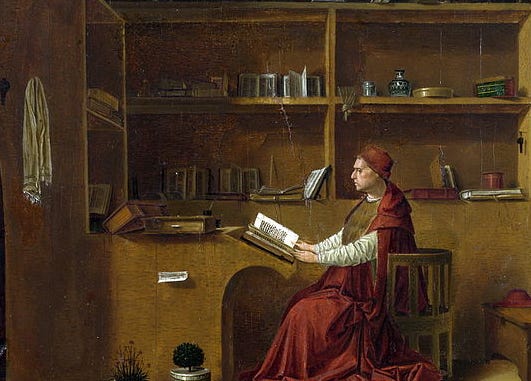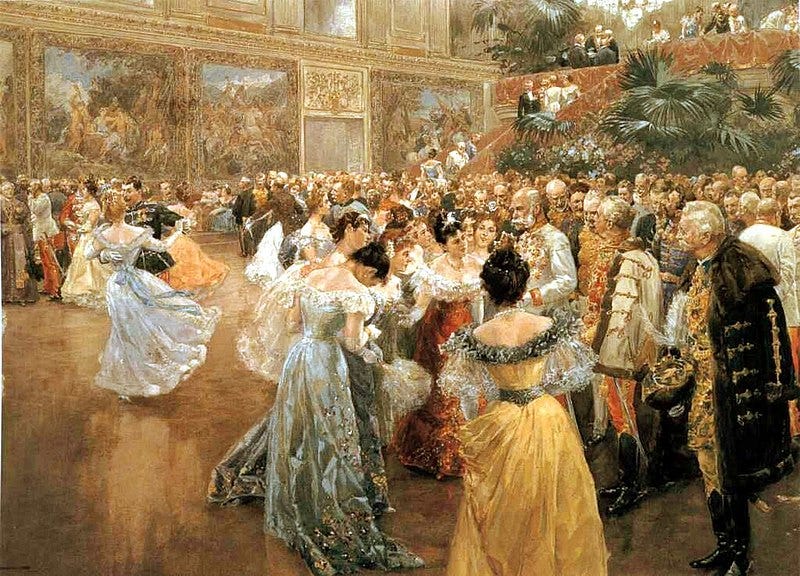One effect of making your history reading (whether primary1 or secondary2) extensive, not intensive, is that when you want to base your setting on real-world examples there may be a better example than the one that first came to mind.
If you actually want to write about Dark Ages Europe, or a thinly veiled fantasy substitute, read as intensively on that era as you like, and the sources permit.
If you want to write about people adventuring in the ruins of a past civilization that fell rather than was conquered, there are, in fact, other options out there.
The fall of Rome, I grant you, is well-documented, and perhaps only the collapse of Chinese dynasties into such things as the Northern and Southern kingdoms or the Five Dynasties and Ten Kingdoms period has comparable documentation.
Which is preferable to rip your region off from? China reconstituted itself in a way that the Roman Empire did not, but that may not factor into the period you wish to build. The earlier empire may be more desirable as the backstory, and you decide to use the era that would logically flow from that.
But then, what if they do not suit your taste? What if you wanted a more complete collapse?
You could look at exaggerating their falls, or looking at places such as Britain where the fall of Rome hit particularly hard.
Or you could consider the Mound Builders. They filled the Mississippi River Valley cities and chiefdoms, over the course of centuries. A bit hard to trace owing to a lack of writing, and using mostly perishable artifacts. Still, we have a little writing about them from Spanish explorers. The encounters generally went badly for the explorers, who often were slaughtered, enslaved, or scattered.
Unfortunately for the Mound Builders, none of that stopped the epidemics.
The Mound Builders collapsed owing to catastrophic and rapid depopulation. They collapsed so thoroughly that while some of their descendants connected themselves to the mounds their ancestors built through myths and legends, others were unaware that the hills they lived by were actually artifacts, not natural, let alone built by their own ancestors.
Imagine tribes of goblins wandering a wilderness, ignorant that those odd rock formations are not just natural. You might want a more magically inclined catastrophe to bring down the great goblin civilization, to make the ruins better suited for adventurers -- and to account for the scale, because the scope of the devastation was a confluence of unique factors.
By comparison, the Justinian plagues did a number on the Roman Empire, but nothing so complete. Indeed, one major effect was to increase Christianity, because Christians organized efforts to ensure the sick received food and water, and so survived at a higher rate.
Faring farther afield brings up other possibilities, though less well documented. The Late Bronze Age Collapse is chiefly studied through archaeology. The original thought that it was caused by the eruption of the Iron Age appears to reverse the cause and effect: the Iron Age started because the collapse made it too hard to procure tin and so to make bronze. Did the Sea People invade and cause it? Which might not make it what you want. (On the other hand, just because the Iron Age explanation was debunked does not make it unusable, if suitably altered.3)
Likewise, Classical Maya civilization collapsed -- or just chilled out, as some put it. The empires fell, but the culture went on, with some shifts in locations where it was concentrated. Drought? Invasion? Disease? The disputes rage on. (Fortunately, if you like one, you can steal it for your own civilization even if it ends up rebutted in time.)
The Harappan, or Indus Valley, civilization is also showed a mysterious decline where debated causes include disease and desertification. Also invasion.
The downside of such lesser-known collapses is that they may require digging through more academic writing, and still perhaps not learning as much as is known about the Dark Ages.
And the very differences between them mean that you need to apply spackle plentifully when getting ideas taken from different collapses to work together.
Such is world-building.
Second-Hand Sources
Most books of history are secondary source, written by people not of the era that they write of, drawing on the sources of that era. And it can be of great use to the writer.
Fictional Fusion Of Real-World Royalty
You are building your society, and it's European. True, it drags in elements of early modern Europe through the 19th century, and back to the Renaissance and even the High Middle Ages, but you can work on that. Magic can explain why they wear 19th century fashion not full plate armor, and yet all the noblemen and royalty live in castles. Not the Gothic …








Passing thought upon reading your excellent essay: The winners write history. The whiners re-write it. Among the fiction writers interpretations perhaps lies the truth.
Hey, as I say, just a passing thought. ;-)
One problem with getting the sources for an obscure era is when you can't find any. Years ago (back before I had steady Internet access) I tried to make a rather odd swords-and-sorcery series up set in a world based on pre-Islamic Iran and Central Asia. I could find a ton of works on Achaemenid Persia, but almost nothing on the Sassanids and or the early Turks. Heck, I found more books on the early Indo-Europeans than on the Sassanids! That sort of thing can get frustrating. You did point this out but I felt it should be emphasized. If you want to get off the beaten trail with your settings, make sure you can either find the information you need or fake it really well.